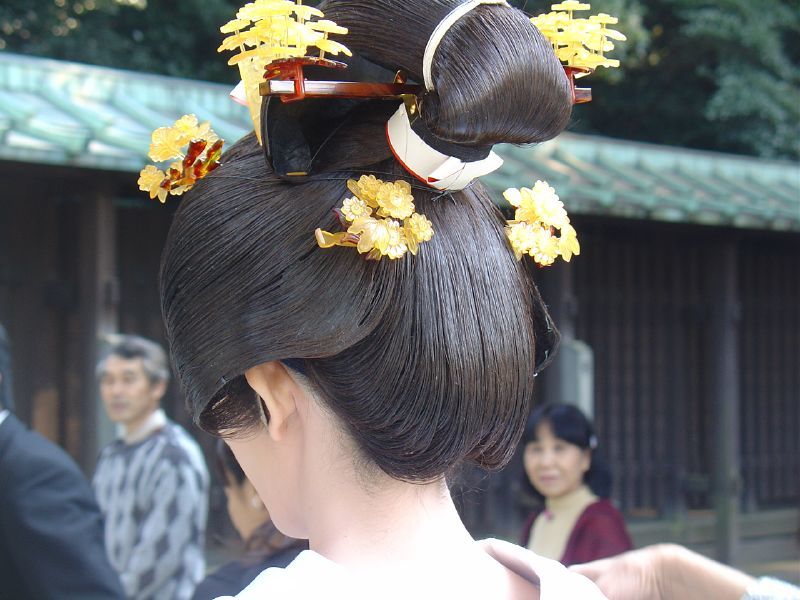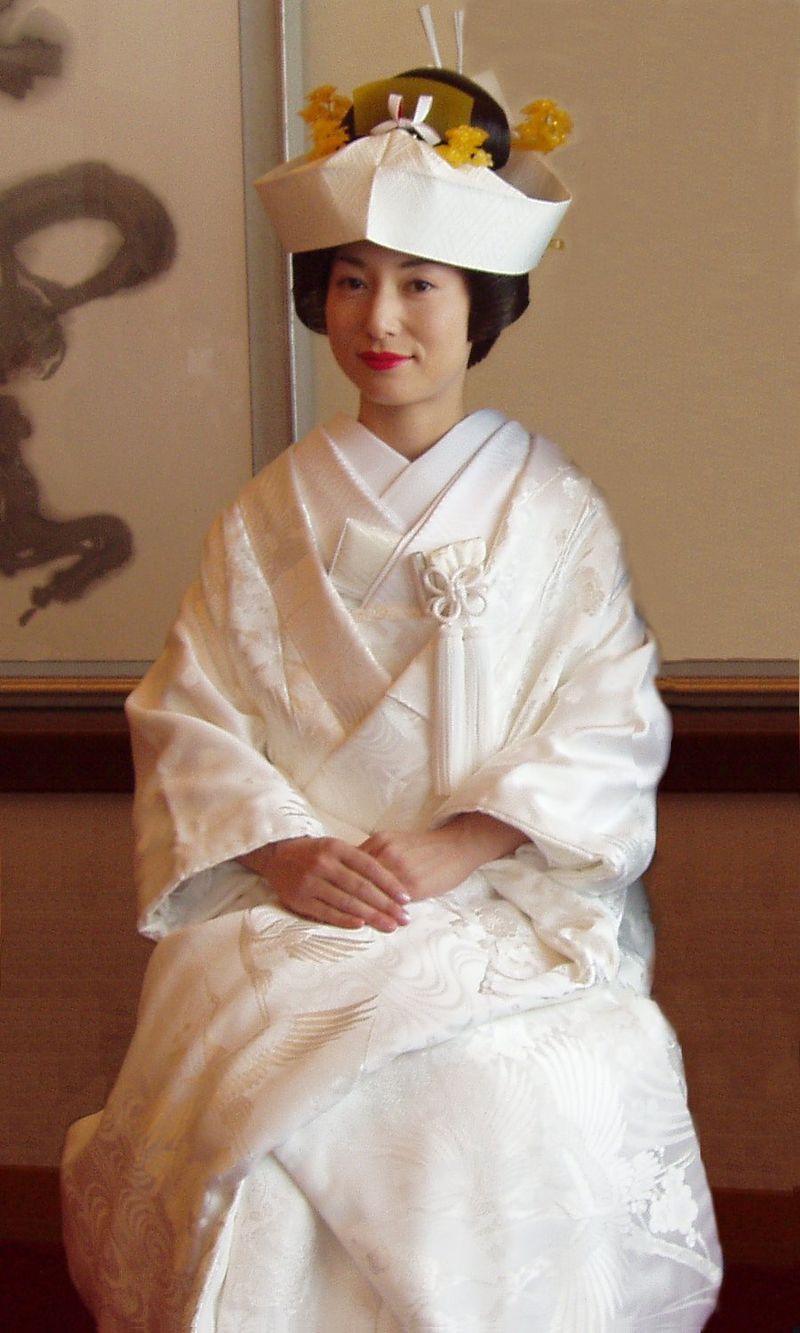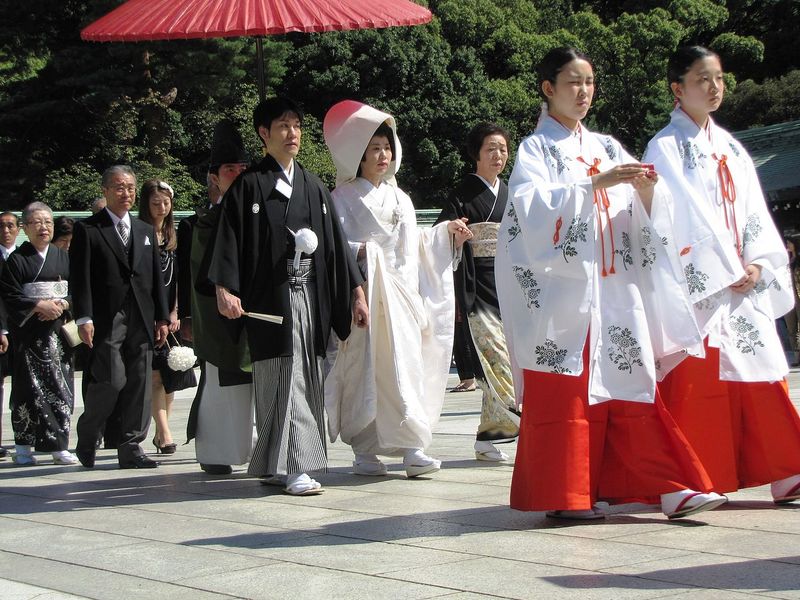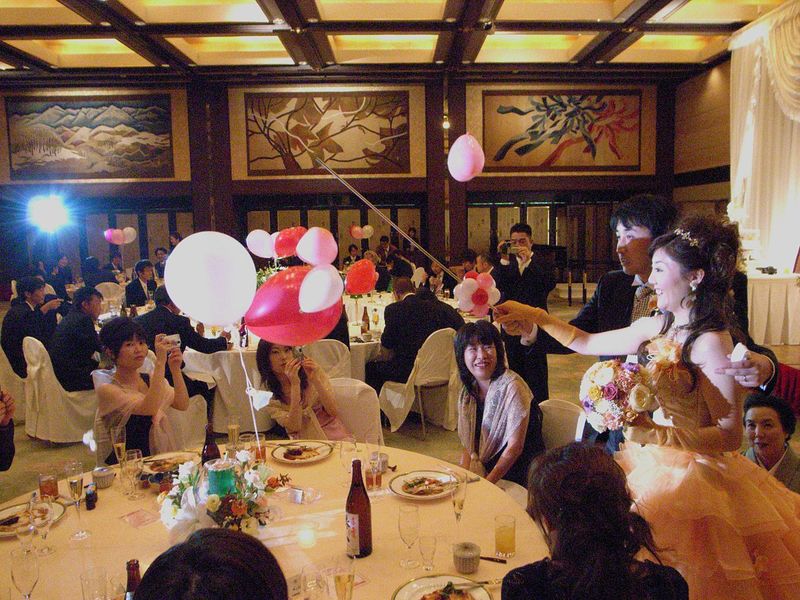Japanese Traditional Wedding
Japanese weddings can be conducted under Shinto, Buddhist, Christian, or secular practices, not requiring affiliation with any particular religion. Traditional bridal attire includes a white kimono and headpieces like the "wataboshi" and "tsunokakushi," symbolizing purity and the bride's transition into married life. Modern Japanese weddings often incorporate Western elements and are celebrated with elaborate receptions and rituals such as the "san-san-kudo" sake-sharing ceremony.
Japanese Traditional Wedding
There are several types of weddings in Japan. There are those done according to Shintoism, Buddhism and Christianity. One does not have to be a member of certain religion to have that sort of wedding ritual. There are non-religious weddings too. Many weddings are held according to western traditions. Still the precondition to either of mentioned weddings is to get married in the local government office.
A Japanese bride traditionally wears a white dress and a special white headpiece. In Japan white traditionally symbolizes death. In context of wedding white symbolizes the end of one living as single person and the start of new life in marriage.
The first headpiece is kind of hood called "wataboshi". It originates from traditional "kazuki" hat which was once worn by wives of samurai warriors.
The second hat that can be worn by the bride is "tsunokakushi" (in Japanese "horn cover"). The folk belief states that this hat hides the bride's horns of jealousy and ego. It symbolizes her wish to become obedient wife. Tsunokakushi is made of white silk.

A bride has a traditional hairstyle. Her hair is decorated with hair ornaments or "kanzashi" as they are known.
A bride wears white kimono called "shiromuku". In Japanese word "shiro" means white and "muku" means pure. Shiromuku kimono is worn without "obi" over white "kakeshita" wedding kimono. Kakeshita kimono includes patterns with different symbols like for example cranes. Cranes are birds where a couple stays together for life.
Shiromoku is not the only type of kimono worn by brides in Japan. Some women wear "uchikake" kimono. This kimono has rich embroidery or is manually painted. The same as "shiromoku" it is worn over "kakeshita" kimono without "obi". Uchicake is only worn during the wedding ceremony or when wedding Image(s) are made.
There are some other objects carried by the bride. They are "sensu" (gold or silver fan), "futokoro-gatana" (a small sword), "hakoseko" (a small box). In this box usually there is a comb and small mirror.
Bride wears traditional white slippers called "zouri".

A groom is dressed in a black formal kimono called "montsuki". He also wears a kimono type of jacket called "haori" and special trousers called "hakama".
Traditional Japanese Shinto wedding is known as "tomesode". It lasts about half an hour. It is held in a shrine or in a special room provided nowadays by many Japanese hotels or restaurants. A wedding ceremony is a very private affair. It is attended only by the bride and groom, the close family and friends.

Everyone present is first informed what are their duties during the ceremony itself. The group then walks towards the shrine. It is lead by a priest and shrine maidens called "miko-san". Everything is accompanied by a traditional melody performed by a band.
The happy couple then sits in front of a table next to the altar. The ceremony starts with a speech by the priest. After that he holds "haraigushi" and performs "shubatsu" or purification rite. The priest then says a "norito" prayer which represents a prayer to a Shinto deity and the celebration of the beginning of new life.
"San-san-kudo" ("Three-times-three") is the name of tradition performed after the mentioned prayer. It celebrates the new union of bride and groom and also the union between two families. Miko-san offers cup of sake to the bride and groom. The groom drinks first and has to drink the whole cup in three sips. The bride does the same. Everything is repeated three times. After that sake is given to parents of both bride and groom. They congratulate to the newlyweds and each other by saying "Omedetou Gozaimasu".
In the next stage of the wedding ceremony groom reads the commitment document. The bride only signs it. Miko-san then announces the wedding date and names of the happy couple.
The ride and groom then make offering of "tamagushi" to the deity ("kami-sama") of the shrine. Tamagushi are actually branches of sakaki tree (Cleyera japonica) that is regarded sacred in Shintoism.
The wedding ceremony ends when those present bow twice, clap hands twice and bow once again.
"Kekkon Hiroen" or a wedding reception is held after the wedding ceremony. Formal dressing is common for this party. Inviting cards are sent. It is interesting to mention that if you get the card you are supposed to send one in which you inform the couple if you are arriving or not.

Each guest should bring a present or certain sum of money. The sum can be written on the invitation card. Still generally speaking the amount depends on how close one is with the couple. Money is put in an envelope called "shuki-bukuro". Banknotes should be new, without foldings. Do not forget to write you name on it. Shuki-bukuro is given to the official at the party venue. You should write yourself in the guest book too.
The happy couple cuts the cake, mingles with guests, lights candles etc. Some guests give speeches and sing songs for the newlyweds. It may sound a bit unusual but there is no dancing. A bride and groom change their clothes several times. Definitely the most impressive garment worn by the bride is "iro-uchikake" kimono.
When leaving the "kekkon hiroen" guests are given a small present or "hikidemono". Some couples even publish kind of a catalogue from which a guest chooses a present.
References
Marriage in Japan
http://en.wikipedia.org/wiki/Marriage-in-Japan
Japanese Kimono: Wedding Wear
http://en.japan-center.mn/content/19032.shtml
Shizuko Mishima, Introduction to Japanese Wedding
http://gojapan.about.com/cs/traditionculture/a/japanesewedding.htm
How Many Types of Wedding Kimono are there? How are They Used?
http://www.kyotokimono.com/page/FAQsWedkim
Japanese Wedding
http://stayingglobal.blogspot.com/2011/08/japanese-wedding.html
Japanese Traditional Wedding Style: Shiromuku for Brides
http://fyoshie060861.blogspot.com/2008/03/japanese-traditional-wedding-style.html
Image(s)
japanese bride - photo by Dave Jenkins
japanese wedding hairstyle - photo by EverJean, Flickr
Japanese wedding - photo by Eli Shany
Kekkon Hiroen - photo by Yuichi Kosio, Flickr
Wikimedia Commons - File:140405 Tsu Castle Tsu MIe pref Japan01s.jpg